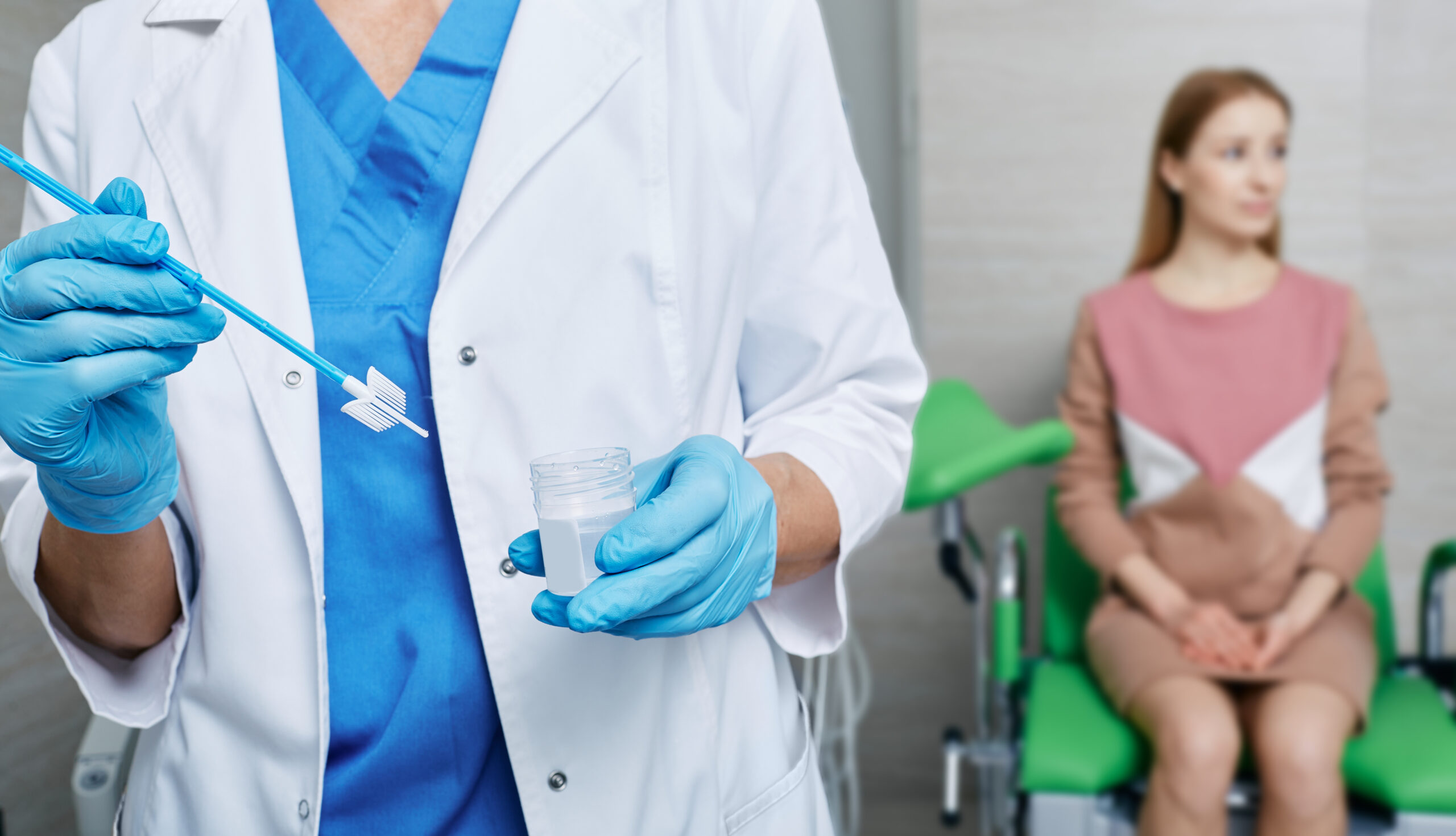Cervical cytology is commonly known as a Pap smear or Pap test. It is a routine screening procedure used to detect abnormal changes in the cells of the cervix.
The cervix is the lower part of the uterus that connects to the vagina. The purpose of cervical cytology is to identify early signs of cervical cancer or pre-cancerous conditions, allowing for timely intervention and treatment. Here’s an overview of the procedure:

Procedure Of Cervical Cytology:
During the procedure:
Positioning: You will lie on an examination table, similar to a pelvic exam.
Speculum Insertion: A healthcare provider will gently insert a speculum into your vagina to hold the vaginal walls apart, allowing the cervix to be visible.
Cell Sample Collection: The healthcare provider will use a soft brush to collect a small sample of cells from the cervix. This process is usually painless but might cause mild discomfort or pressure.
In sample preparation, healthcare professionals transfer the collected cells to a glass slide or a liquid medium, preserving them for laboratory analysis.
The laboratory analysis involves sending the collected cells to a laboratory, where a trained cytotechnologist or pathologist examines them under a microscope.
Purpose:
Cervical cytology serves several important purposes:
Early Detection: The main goal is to detect any abnormal changes in cervical cells before they develop into cervical cancer.
Screening for HPV: Cervical cytology may also be used to test for the presence of high-risk strains of human papillomavirus (HPV). HPV is a major risk factor for cervical cancer.
Identification of Pre-Cancerous Changes: The test can identify pre-cancerous changes in cervical cells (called cervical dysplasia or cervical intraepithelial neoplasia). Pre-cancerous changes can be treated before they progress to cancer.
Follow-Up: Abnormal results might lead to further testing, such as colposcopy (a closer examination of the cervix) and biopsies, to confirm the presence of abnormal cells.
Frequency:
Guidelines for the frequency of cervical cytology can vary depending on factors such as age, health history, and risk factors. In general:
Starting Age: Most guidelines recommend starting screening around age 21.
Frequency: Generally, women aged 21 to 29 should have a Pap test every three years. Women aged 30 to 65 may have a Pap test every three years. A Pap test combined with an HPV test every five years.
After Age 65: In women over 65 who have regular screenings and normal results, cervical cytology can stop.
It’s important to follow the screening recommendations provided by your healthcare provider. Cervical cytology is a valuable tool for preventing cervical cancer or detecting it at an early, treatable stage. If you have questions or concerns about cervical cytology, consult your healthcare provider for guidance.


